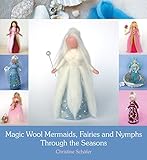Faeries, Brownies and other nymphs
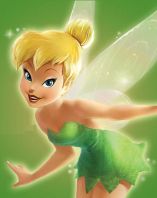
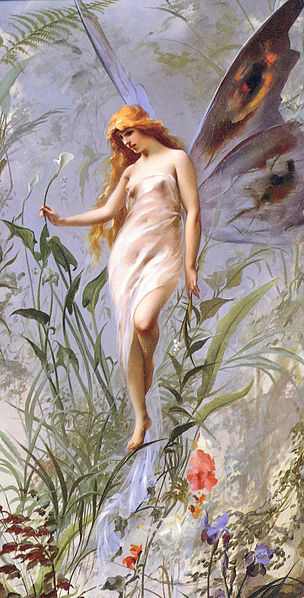
Faeries
Faeries have always been magical, enchanting, sprites that flutter around in imaginary worlds. They became part of our childhood culture through such stories and books as E.M Barrie's Peter Pan. We have grown to love Tinker Bell, one of the faery characters from that book.
Walt Disney took this iconic character from the book and turned her into the most popular of Disney animated characters. She even became the non-official mascot of Walt Disney World. After Mickey Mouse, she is the symbol of magic, diminutive faeries, fluttering wings, and magic wands. Tinker Bell and her family of faeries were always around to help us get through the maze of a situation. But, where to faeries, brownies and other nymphs come from?
Over many years, they have come from the British Isles, especially England and Scotland. It is from the oral stories handed down over the generations there and from English and Scottish illustrators that we get the stories and images we have today of faeries, brownies and other nymphs.
And, by the way, just what is a faerie?
A faery is defined as a mythical or legendary creature, a form of spirit, and often described as metaphysical, supernatural or preternatural. It can describe any magical creature including brownies, pixies, goblins, gnomes, elves and trolls. Other times it can refer to the more ethereal creatures with the diaphonous wings. Faeries are usually described as human in appearance and having magical powers.
In our modern culture faeries are depicted as young, sometimes winged humanoids of small stature. But, they do not have to be small. The small size is not always constant. They can grow to human size and they magically can return to their diminutive stature. In many stories small faeries flew by magic, sometimes flying on ragwort stems or backs of birds.
Folklorists say that their actual origin lies in a conquered race living in hiding. Or many contribute faeries to religious beliefs in the British Isles that died out with the advent of Christianity. One common theme among Celtic nations was that there existed a race of small people who have been driven into hiding by invading humans. Faeries are believed to have lived in the 'Otherworld' many times described as being underground or in hidden hills or across the Western sea.
English literature is full of faeries and faerie worlds. Edmund Spencer featured a faerie world that came to the aid of Prince Arthur in his great epic poem, The Faerie Queen. In his great poem, the Faerie Queen represented and symbolized his great Queen Elizabeth I.
My favorite faerie world is in William Shakespeare's play, A Midsummer Night's Dream. Here Shakespeare took the faerie world of Titania and Oberon and their minions, already in British folklore and legend, and included them in his plot and play. Legend has it that in Britain every June 21, on midsummer night, the faerie world comes alive to help bring lovers together. The play and the faery world is partially set in the realm of faeryland under the light of the moon. There is a great faery dispute going on this particular midsummer night and it creates a tension underlying the plot and affecting the actions of the characters. Shakespeare blurs fantasy and reality in the play and through his dreamlike magical moments makes possible our belief in the faery world.
The faeries in Shakespeare's plays exhibit all the personalities and behaviors that the English believed in at the time. These faeries are loyal to their King and Queen, they intermingle with and try to help the human characters come together in love and harmony only to learn, "What fools these mortals be."
In the beginning of Act II, of Shakespeare's play, one of the faeries explains her daily routine,
Over hill, over dale,
Thorough bush, thorough brier,
Over park, over pale
Thorough flood, thorough fire,
I do wander everywhere,
Swifter than the moon's sphere,
And I serve the Fairy Queen
To dew her orbs upon the green.
The cowslips tall her pensioners be;
In their gold coats spots you see;
Those be rubies, fairy favors,
In those freckles live their savors.
I must go seek some dewdrops here,
And hang a pearl in every cowslip's ear.
Farewell, thou lob of spirits; I'll be gone.
Our queen and all her elves come here anon.
What is interesting is the hierarchy that the faery world has and after Queen Titania and King Oberon, the next highest faery in power is Puck, who takes charge of the other faeries and gives them their orders. But, of course, the faeries are a bit mischievous, too. They can get into trouble and muck things up. Although they live around humans and want to help them, they can confound them, too.
Also, from Act II, Puck describes the shinanigans that he and his minions of faeries can get into,
Thou speakest aright;
I am that merry wanderer of the night.
I jest to Oberon, and make him smile,
When I a fat and bean-fed horse beguile,
Neighing in likeness of a filly foal;
And sometimes lurk I in a gossip's bowl,
In very likeness of a roasted crab;
And when she drinks, against her lips I bob
And on her withered dewlap pour the ale.
The wisest aunt, telling the saddest tale,
Sometime for three-foot stool mistaketh me;
Then slip I from her bum, down topples she,
And "tailor" cries, and falls into a cough;
And then the whole quire hold their hips and laugh,
And waxen in their mirth and neeze, and swear
A merrier hour was never wasted there.
But, room, fairy! Here comes Oberon.
Puck is famous in British lore for always being around and causing the mischief when the tailor has a coughing spell, when the gossip spills her beer, and the aunt falls off her stool, this is the mischief created by Puck. They live in their own world but intermingle with the human world and cause goodness and mischief.
Shakespeare brings alive for us the faery lore and legend of the British Isles when he included the faery world of Titania, Oberon, and Puck. And, if you don't believe in faery world's? Then just heed Puck's words at the conclusion of the play,
If we shadows have offended,
Think but this, and all is mended:
That you have but slumb'red here,
While these visions did appear.
Source: William Shakespeare A Midsummer Night's Dream Holt Rinehart Winston
A Midsummer Night's Dream
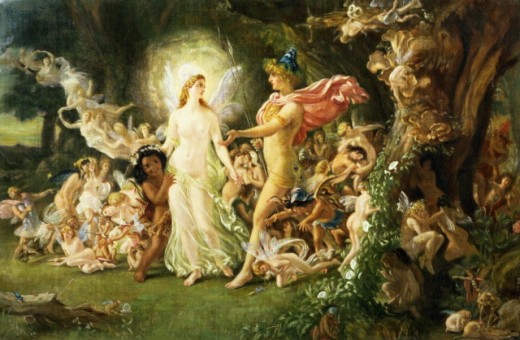
Titania and Oberon
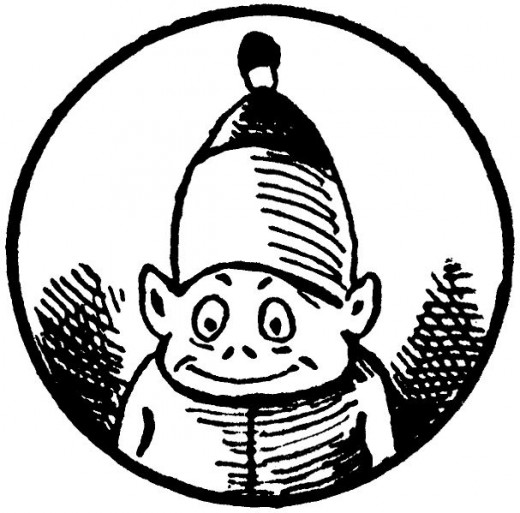
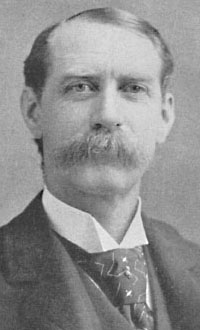
- Faerie lore of the British Isles
Faerie lore has been part of the culture and customs of the British Isles for thousands of years.
Brownies
I joined the Brownies when I was six years old. The Brownies are the junior group of girls that are part the Girl Scouts here in the U.S. The name of this group for small girls was taken from the legend and folklore of the British Isles. Again, Brownies were little wee ones from English and Scottish lore that inhabited houses and aided in tasks around the home. They looked like the illustration to the right and if you notice, wore little beanie caps on their heads. We did too, in our girls' Brownie group as part of our brown Brownie uniform. We were supposed to be helpful little Brownies to our mothers around the house, helping with tasks, and staying out of trouble at the same time. We were to scamper around the house, barely noticeable, helping our mothers clean and unclutter the house.
As with faeries, brownies were little creatures popular in folklore around Scotland and England. Brownies resemble the hobs, similar to a hobgoblin in folklore, but good hobgoblins. According to the British legend brownies lived in houses and aided in tasks around the house. They do not like to be seen and only work at night, traditionally in exchange for small gifts of food. Brownies made their home in the unused portion of the house, never disturbing the human folk they lived with. And, they would abandon any house where the gifts were called payments or if the human folk of the house misused them.
Brownies would seldom speak to the human folk but held frequent conversations with one another. They slept during the day and conversed and did their helpful tasks at night. In Scottish legend and lore, brownies also lived outside alongside and within streams and brooks. Brownies have always been depicted as fun loving creatures looking for adventures.
There were also other ways in which Brownies became part of my life here in the U.S. The . brownie elf was used as the mascot for the Cleveland Browns football team from 1946-1965. Then, Art Modell bought the team and as owner phased out Brownie as a mascot for the team. Before Art Modell, the fans even called the Browns, 'Brownies'. The mascot was revived on a limited basis by the Clevelandf Browns when the team returned in Cleveland in 1999, after Modell had hijacked his team to Baltimore. During the 2004 Browns football season, the Brownies appeared on the team's sideline ponchos and equipment trucks.
The Eastman Kodak company came out with the Brownie camera in the 1960s, named for the little wee folk called brownies. It was the first popular handheld 'box' camera. My father bought me my first camera when I was nine or ten years old and it was a Kodak Brownie camera. You pulled up the lens cover, which was on the top of the camera, looked into the lens, focused your picture and then snapped the button to take it. I used black and white film, and it was so fun to have a camera to take my own pictures instead of always posing for pictures. It gave me a sense of confident independence to be able to record life how I saw it through the lens. I have loved photography all my life and as I got older, my cameras became more sophisticated. But, it is the little 'box' Brownie camera that formed my love of photography and the individual unique vision of the world that I could record with one.
If you remember the film, "Willow" from the 1980s it had two little Brownie characters that 'helped' Willow throughout the film. The Brownies also appeard in the three novels that came after the film, "Shadow Moon," "Shadown Dawn," and "Shadow Star." And, there are even little House Elves in the "Harry Potter" series that show great resemblance to the brownies of folklore and may have been inspired by them.
And where did we get the illustrations of the wee little Brownies that have entertained us over the years? From the Canadian illustrator and author Palmer Cox (1840-1924). He originally came up with the illustration you see to the right. He is best known for "The Brownies", a series of humorous verse books and comic strips about mischievous but kind-hearted fairy-like spirits.
Cox was born in Granby, Quebec in Canada and became a carpenter and car builder in his adult life. In 1874, he began to formally study drawing and contributed stories and illustrations for them to different publications in Canada and the U.S.
He eventually moved to San Francisco and New York City for work related reasons. His earliest publication of the Brownie character was in 1879. By 1883, his Brownie stories appeared in "St. Nicholas Magazine," and as the stories and illustrations grew in popularity they were published in magazines such s the "Ladies' Home Journal." In his illustrations, each of his Brownies had a distinctive look and they were depicted as little men who had mischievous adventures together.
Thanks to the British Iles and their folklore and legends, we have had faery and brownie worlds of our own here in the U.S. And, especially when we were children, we were delighted by tales of faeries, brownies and of course, Tinker Bell. Thanks to those British writers and illustrators, and Walt Disney, we have been able to experience our own little enchanted Neverland, no matter how brief our childhood was.
Copyright (c) 2012 Suzannah Wolf Walker all rights reserved
Related links
- Faerie lore of the British Isles
Faerie lore has been part of the culture and customs of the British Isles for thousands of years. - Fairies' Secrets
Fairies have secrets. If you find us you have indeed wandered far into the fairy web within your Web, where only those with Fey blood or touched by magic may enter. Perhaps you. - Fairies, Faeries, Fairys at LaLa's Land


